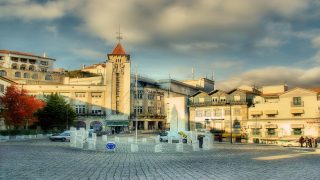On November 1, 1755, one of Europe’s most powerful earthquakes struck Lisbon in the early morning. The earthquake and resulting tsunami took the lives of an estimated 60,000-100,000 people, making it one of the most deadly natural disasters in history. Find out exactly what happened and if Lisbon is at risk by reading further.
What was the Lisbon Earthquake?
The earthquake struck on All Saints’ Day, a Catholic holy feast day that brought hundreds of worshippers to Lisbon’s churches and cathedrals. It is estimated that much of the city’s population, around 200,000, was gathered for mass. This was at the time the earthquake hit. On this day, churchgoers lit candles in the city’s many churches and when the earthquake struck, tearing down the buildings and structures that weren’t designed to withstand the tremors. The lit candles started fires that further compounded the destruction of the day. The fires destroyed the city for days after the last of the tremors were felt and took even more lives. If you want to hear all about the Lisbon earthquake while going through the places it destroyed, this 3-hour tour is right for you (tour guide included).
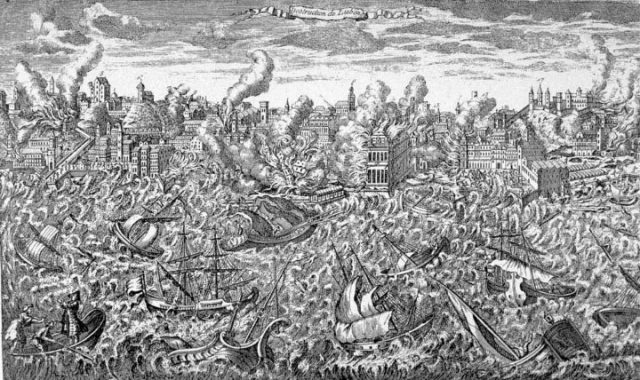
“You may judge of the force of this shock, when I inform you it was so violent that I could scarce keep on my knees; but it was attended with some circumstances still more dreadful than the former. On a sudden I heard a general outcry, “The sea is coming in, we shall be all lost.” – An excerpt from the eye-witness account of the Rev. Charles Davy, who survived the disaster.
What was the strength of the earthquake?
The earthquake is believed to have been between a magnitude of 8.5-9.0 on the Richter scale.
Areas in Lisbon that were affected the most
The epicentre of the Lisbon earthquake was about 200 km from Cape Vicente in the Atlantic Ocean and was caused by a slip of the Azores-Gibraltar transform fault. Beginning at around 9:30 am, three separate quakes spaced just a few minutes apart violently shook southwestern Portugal. The quake was felt most along the western and southern coastlines of Portugal. In Lisbon, destruction took place mostly in the areas along the Tagus River and around the centre of the city. The Sé Cathedral, the Igreja do Carmo, the grand library, and the royal palace (Ribeira Palace) were among the most notable places affected by the earthquake. The areas of Baixa and Belém were also most affected by the earthquake and resulting tsunamis and fires. Discover more about Portugal and its fascinating history when you subscribe to our newsletter.
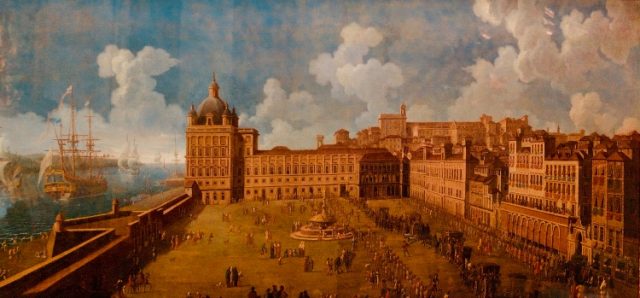
The aftermath of the great earthquake
The earthquake was just the beginning of the terror faced by the inhabitants of Lisbon in 1755. As the buildings and churches crumbled down around the people, they fled for the streets to escape the crashing rubble. Those who survived ran down to the relatively open areas of the docklands, near the Tagus River. As a tsunami prepared to hit the coast, the water of the river retreated, revealing sunken shipwrecks full of treasures. The excited Lisboetas ran towards the water to plunder the wrecks, wading in the shallow river. Suddenly, a massive nine-meter-high wave pummeled its way through the Tagus estuary, making its way up the river and flooding all low-lying areas, including the areas of Baixa and Belem. During the following three hours after the earthquake, an additional two tsunamis hit Lisbon. Thousands of city residents who had survived the initial quake were drowned by the tsunami or killed in the rush of debris that the water carried with it. Those who survived both the earthquake and tsunamis were forced to combat ravaging fires spreading through the higher-ground areas of the city untouched by the water. As the religious celebration called for flowers and decorations in addition to the candles, the fire spread easily through these materials. The fires weren’t put out until five days after the earthquake.
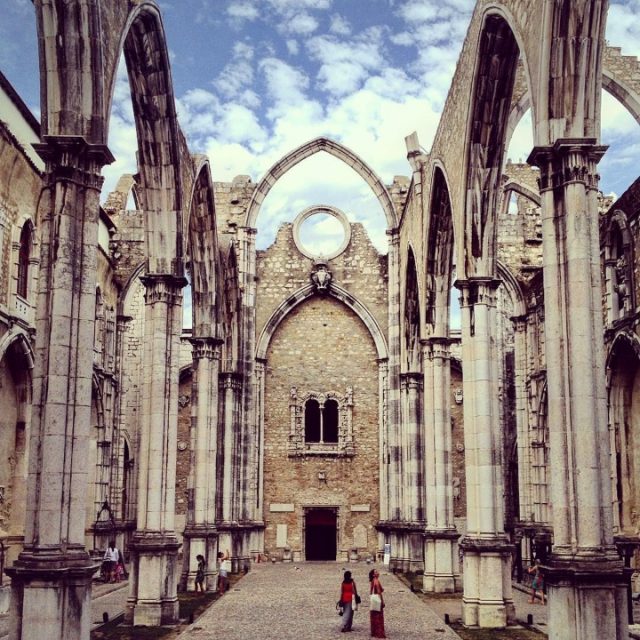
Reconstruction: Lisbon before and after the earthquake
The Lisbon that existed before the earthquake almost entirely disappeared, especially in the areas most affected. Coupled with the destruction caused by the various tragedies and the reconstruction efforts made to ensure the city would be better prepared to deal with a similar catastrophe in the future, the city looked quite different before and after November 1, 1755. The streets and alleys of the city prior to the earthquake did not adhere to any specific geometric plan. They were haphazard and chaotic. The bustling urban centre was medieval in appearance and architecture, with Renaissance touches. The earthquake levelled about 85% of the city’s infrastructure at the time. Due to the efforts carried out by Marquês do Pombal to reconstruct the city, a regular layout and even blocks were erected on top of the old vestiges of Lisbon. Pombal guided the reconstruction based on French architectural trends of the 18th century, which included large squares and bride avenues. He also attempted to make the infrastructure better suited to withstand the shakes and tremors of a future earthquake. To test their resistance, Pombal had army troops march around the buildings to mimic the tremors that an earthquake would cause.
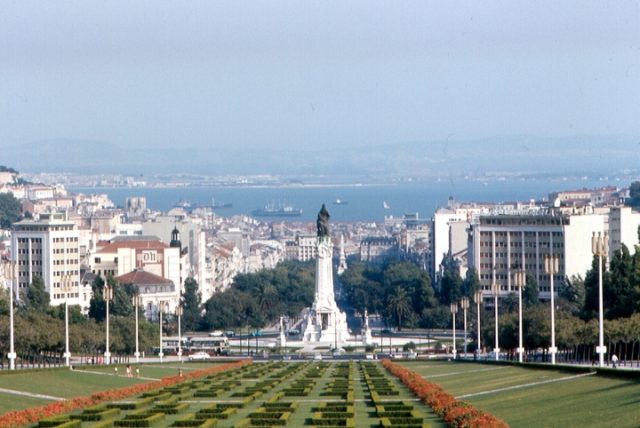
What were the causes of the Lisbon earthquake?
Due to modern technologies, scientists are better able to predict the reason behind the 1755 quake. The main seismic source was faulting of the seafloor along the tectonic plate boundaries of the mid-Atlantic, in an eastward-dipping subduction zone.
Is Lisbon due for another earthquake?
Lisbon and Portugal in general regularly experience smaller earthquakes, whose effects go unnoticed by most people. The prospect of a recurrence of the high-magnitude quake that destroyed the city in 1755 is unlikely to happen anytime soon – researchers estimate that this type of quake has a return period of between 3,000 and 4,000 years. If Lisbon is to experience another earthquake similar to the one that struck in 1755, historic districts and city centres would see the most destruction. Portugal’s masonry constructions, some of which date back hundreds of years, are more susceptible to destruction than the modern reinforced concrete construction that is used in urban building. Despite the devastation experienced in 1755, modern seismic building codes were not officially implemented and reinforced until the 1950s.
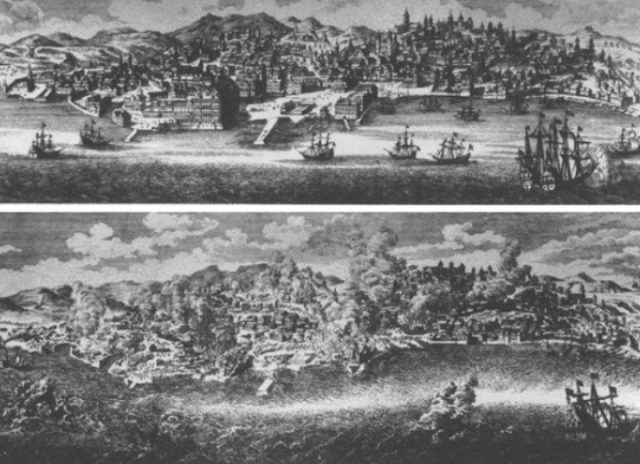
1755 Lisbon earthquake interesting facts
- The famous author Voltaire, who witnessed the quake, referenced the event in his book Candide. In it, he parodies the widespread thinking at the time that the earthquake was caused by God’s wrath. This while also parodying the optimistic line of thinking that everything happens for the best.
- Lisbon was not the only area affected by the earthquake – destruction along the southern coast of the Algarve was also rampant. Almost all coastal towns and villages were destroyed in the region.
- Shocks from the earthquake were felt as far north as Finland with tsunamis also sweeping the northern coasts of Africa.
- Nearly 70% of Lisbon’s dwellings—about 23,000 buildings—were destroyed or substantially damaged by the combined effects of shaking, fire, and tsunami.
- About 32% to 48% of Portugal’s GDP at the time was lost due to the effects of the devastation.
How to survive if there is an earthquake and tsunami near you?
- To protect yourself from an earthquake, drop, cover, and hold on.
- Get as far away from glass, large furniture, and other dangerous hazards.
- It is best to find a covered spot to take shelter. Remain in your safe spot until after the shaking stops.
- If you are under a tsunami warning, get to high and stable ground as fast as possible.
- Don’t wait to evacuate the area if you are in danger of getting hit by a tsunami. Move as far inland as you can.
- If you are already in the water in a boat, head in the direction of the waves. Go further out to sea.
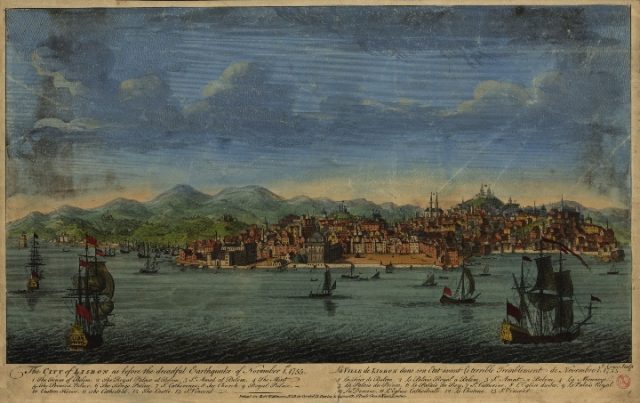
After the earthquake
The Lisbon earthquake of 1755 required an unprecedented response and reconstruction effort. This gave rise to some of the first provisions for urban disaster mitigation and earthquake-resistant building design. In an attempt to understand the origins of the disaster and investigate and document further earthquakes, it is also considered by some to have given birth to modern seismology.







